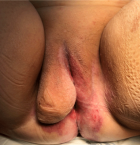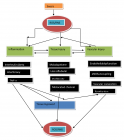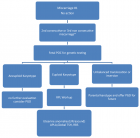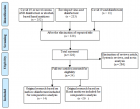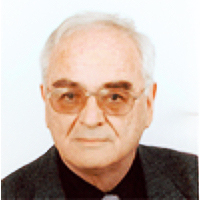Abstract
Research Article
Injuries of the shoulder sustained by Surfboard riders
Simon Dimmick*, Jillian Patterson, Patrick Sheehan, Suzanne Anderson and Graeme MacDougal
Published: 09 January, 2018 | Volume 3 - Issue 1 | Pages: 010-016
Background: To determine the spectrum of shoulder pathologies suffered by surfers.
Methods: Prospective descriptive study. Surfers with shoulder injuries who were referred to a sub-speciality orthopaedic shoulder private practice situated on the Northern beaches of Sydney (Australia) were recruited over a three-year period.
Results: 42 shoulders in 37 subjects were included-12 acute injuries (29.3%), 9 acute on chronic (22%) and 20 chronic injuries. Average age 48 years (range 20-72 years). Seventeen subjects (46%) had manual occupations and 20 subjects (54%) had office-based occupations. Spectrum of pathologies included rotator cuff tendon tears, long head of biceps tendon pathology, labral tears, acromioclavicular and glenohumeral joint osteoarthritis.
Discussion: There is a wide spectrum of acute and chronic shoulder injuries sustained by surfers. The most common presentation was for chronic pathology. The average age of 48 suggests that age may play a role in attritional/degenerative change and therefore an increased likelihood of injury.
Read Full Article HTML DOI: 10.29328/journal.jsmt.1001021 Cite this Article Read Full Article PDF
Keywords:
Surfing; Shoulder; Injury; Surgery; Occupation
References
- Nathanson A, Bird S, Dao L, Tam-Sing K. Competitive surfing injuries: a prospective study of surfing-related injuries among contest surfers. AJSM. 2007; 35: 113-117. Ref.: https://goo.gl/QXAuKv
- Furness J, Hing W, Walsh J, Abbott A, Sheppard JM, et al. Acute Injuries in Recreational and Competitive Surfers: Incidence, Severity, Location, Type, and Mechanism. AJSM. 2015; 43: 1246-1254. Ref.: https://goo.gl/33aswo
- Farley ORL, Harris NK, Kindling AE. Physiological demands of competitive surfing. Journal of Strength and Conditioning Research. 2012; 26: 1887-1896. Ref.: https://goo.gl/RYZ1oJ
- Dewan AK, Garzon-Muvdi J, Petersen SA, Jia X, McFarland EG. Intraarticular abnormalities in overhead athletes are variable. Clinical Orthopedics and Related Research. 2012; 470: 1552-1557. Ref.: https://goo.gl/KyxbF9
- Melchior M, Roquelaure Y, Evanoff B, Chastang JF, Ha C, et al. Why are manual workers at high risk of upper limb disorders?: the role of physical work factors in a random sample of workers in France (the Pays de la Loire study). Occupational and Environmental Medicine. 2006; 63: 754-761. Ref.: https://goo.gl/f6AXpH
- Seidler A, Bolm-Audorff U, Petereit-Haack G, Ball E, Klupp M, et al. Work-related lesions of the supraspinatus tendon: a case–control study. International Archives of Occupational and Environmental Health. 2011; 84: 425-433. Ref.: https://goo.gl/SRkjrc
- Silverstein BA, Bao SS, Fan ZJ, Howard N, Smith C, et al. Rotator cuff syndrome: personal, work-related psychosocial and physical load factors. Journal of Occupational and Environmental Medicine. 2008; 50: 1062-1076. Ref.: https://goo.gl/PPE2GW
- Svendsen SW, Bonde JP, Mathiassen SE, Stengaard-Pedersen K, Frich LH. Work related shoulder disorders: quantitative exposure-response relations with reference to arm posture. Occupational and Environmental Medicine. 2004; 61: 844-853. Ref.: https://goo.gl/VCnVbr
- Svendsen SW, Gelineck J, Mathiassen SE, Bonde JP, Frich LH, et al. Work above shoulder level and degenerative alterations of the rotator cuff tendons: a magnetic resonance imaging study. Arthritis & Rheumatology. 2004; 50: 3314-3322. Ref.: https://goo.gl/RkZDep
- Van der Windt DA, Thomas E, Pope DP, De Winter AF, Macfarlane GJ, et al. Occupational risk factors for shoulder pain: a systematic review. Occupational and Environmental Medicine. 2000; 57: 433-442. Ref.: https://goo.gl/7SbPxy
- Tashjian RJ. Epidemiology, natural history, and indications for treatment of rotator cuff tears. Clinics in Sports Medicine. 2012; 31: 589-604. Ref.: https://goo.gl/jCNcMn
- Milgrom C, Schaffler M, Gilbert S, Van Holsbeeck M. Rotator- cuff changes in asymptomatic adults. The effect of age, hand dominance and gender. JBJS (Br). 1995; 77: 296-298. Ref.: https://goo.gl/BkdCBn
- Tempelhof S, Rupp S, Seil R. Age-related prevalence of rotator cuff tears in asymptomatic shoulders. Journal of Shoulder and Elbow Surgery. 1999; 8: 296-299. Ref.: https://goo.gl/tK7rzG
Similar Articles
-
‘Rotational alignment on patients’ clinical outcome of total knee arthroplasty: Distal femur axillary X-ray view to qualify rotation of the femoral componentS Magersky*. ‘Rotational alignment on patients’ clinical outcome of total knee arthroplasty: Distal femur axillary X-ray view to qualify rotation of the femoral component. . 2020 doi: 10.29328/journal.jsmt.1001050; 5: 008-011
-
Shoulder muscle weakness effects on muscle hardness around the shoulder joint and scapulaeKubota Atsushi*,Takayanagi Chiho,Kishimoto Kohei. Shoulder muscle weakness effects on muscle hardness around the shoulder joint and scapulae. . 2020 doi: 10.29328/journal.jsmt.1001049; 5: 001-007
-
Olfactory Dysfunction in Sports Players following Moderate and Severe Head Injury: A Possible Cut-off from Normality to PathologyGesualdo M Zucco*,Andrea Carletti,Richard J Stevenson. Olfactory Dysfunction in Sports Players following Moderate and Severe Head Injury: A Possible Cut-off from Normality to Pathology. . 2016 doi: 10.29328/journal.jsmt.1001001; 1: 001-005
-
Retrospective Analysis of Non-Contact ACL Injury Risk: A Case Series Review of Elite Female AthletesLee Herrington*,Ros Cooke. Retrospective Analysis of Non-Contact ACL Injury Risk: A Case Series Review of Elite Female Athletes. . 2017 doi: 10.29328/journal.jsmt.1001002; 2: 001-008
-
The Utility of Acupuncture in Sports Medicine: A Review of the Recent LiteratureMichael Malone*. The Utility of Acupuncture in Sports Medicine: A Review of the Recent Literature. . 2017 doi: 10.29328/journal.jsmt.1001004; 2: 020-027
-
3-Dimensional Versus 2-Dimensional Comparison of Knee Valgus Collapse during Vertical Jump: Clinical Implications for ACL Risk of Injury AssessmentGuilherme M Cesar*,Chase M Pfeifer,Judith M Burnfield. 3-Dimensional Versus 2-Dimensional Comparison of Knee Valgus Collapse during Vertical Jump: Clinical Implications for ACL Risk of Injury Assessment. . 2017 doi: 10.29328/journal.jsmt.1001006; 2: 032-038
-
The role of UK national ligament registry as additional source of evidence for anterior cruciate ligament reconstruction: Review of the literature and future PerspectivesTarek Boutefnouchet*,Thomas Laios,Keshav Mathur. The role of UK national ligament registry as additional source of evidence for anterior cruciate ligament reconstruction: Review of the literature and future Perspectives. . 2017 doi: 10.29328/journal.jsmt.1001012; 2: 081-090
-
Joint Functional Screening for Older Adults: Clinical Prevention of Accidental FallBalwant S Bains*. Joint Functional Screening for Older Adults: Clinical Prevention of Accidental Fall. . 2017 doi: 10.29328/journal.jsmt.1001013; 2: 091-094
-
Injuries of the shoulder sustained by Surfboard ridersSimon Dimmick*,Jillian Patterson,Patrick Sheehan,Suzanne Anderson,Graeme MacDougal. Injuries of the shoulder sustained by Surfboard riders. . 2018 doi: 10.29328/journal.jsmt.1001021; 3: 010-016
-
Chondrogenic re-differentiation potential of chondrocytes after monolayer culture: Comparison between osteoarthritis and young adult patientsKazuki Oishi*,Shusa Ohshika,Ken-Ichi Frukawa,Eiichi Tsuda,Yuji Yamamoto,Yasuyuki Ishibashi. Chondrogenic re-differentiation potential of chondrocytes after monolayer culture: Comparison between osteoarthritis and young adult patients. . 2019 doi: 10.29328/journal.jsmt.1001038; 4: 016-023
Recently Viewed
-
FITT-CORRECT: Updated dynamic and evidence-based principle of exercise prescriptionShambhu P Adhikari*,Jarugool Tretriluxana,Rubee Dev,Emily Eglitis,Nistha Shrestha,Cheryl Kerfeld6. FITT-CORRECT: Updated dynamic and evidence-based principle of exercise prescription. J Nov Physiother Rehabil. 2021: doi: 10.29328/journal.jnpr.1001039; 5: 005-009
-
Unusual cause of parietal thoracic pain: A case reportMohamed Labied*,Hayat Lhajoui,Najwa Touil,Omar Kacimi,Nabil Chikhaoui . Unusual cause of parietal thoracic pain: A case report. Arch Case Rep. 2020: doi: 10.29328/journal.acr.1001040; 4: 046-047
-
Zn2+ Ions-Immune Virucidal activities for children and adults with preventions against 2019-nCoV and COVID-19 infectionTsuneo Ishida*. Zn2+ Ions-Immune Virucidal activities for children and adults with preventions against 2019-nCoV and COVID-19 infection. J Child Adult Vaccines Immunol. 2020: doi: 10.29328/journal.jcavi.1001006; 4: 006-014
-
Exophthalmos Revealing a Spheno Temporo Orbital MeningiomaHassina S*, Krichene MA, Hazil Z, Bekkar B, Hasnaoui I, Robbana L, Bardi S, Akkanour Y, Serghini L, Abdallah EL. Exophthalmos Revealing a Spheno Temporo Orbital Meningioma. Int J Clin Exp Ophthalmol. 2024: doi: 10.29328/journal.ijceo.1001055; 8: 001-003
-
Unveiling the Impostor: Pulmonary Embolism Presenting as Pneumonia: A Case Report and Literature ReviewSaahil Kumar,Karuna Sree Alwa*,Mahesh Babu Vemuri,Anumola Gandhi Ganesh Gupta,Nuthan Vallapudasu,Sunitha Geddada. Unveiling the Impostor: Pulmonary Embolism Presenting as Pneumonia: A Case Report and Literature Review. J Pulmonol Respir Res. 2025: doi: 10.29328/journal.jprr.1001065; 9: 001-005
Most Viewed
-
Evaluation of Biostimulants Based on Recovered Protein Hydrolysates from Animal By-products as Plant Growth EnhancersH Pérez-Aguilar*, M Lacruz-Asaro, F Arán-Ais. Evaluation of Biostimulants Based on Recovered Protein Hydrolysates from Animal By-products as Plant Growth Enhancers. J Plant Sci Phytopathol. 2023 doi: 10.29328/journal.jpsp.1001104; 7: 042-047
-
Sinonasal Myxoma Extending into the Orbit in a 4-Year Old: A Case PresentationJulian A Purrinos*, Ramzi Younis. Sinonasal Myxoma Extending into the Orbit in a 4-Year Old: A Case Presentation. Arch Case Rep. 2024 doi: 10.29328/journal.acr.1001099; 8: 075-077
-
Feasibility study of magnetic sensing for detecting single-neuron action potentialsDenis Tonini,Kai Wu,Renata Saha,Jian-Ping Wang*. Feasibility study of magnetic sensing for detecting single-neuron action potentials. Ann Biomed Sci Eng. 2022 doi: 10.29328/journal.abse.1001018; 6: 019-029
-
Physical activity can change the physiological and psychological circumstances during COVID-19 pandemic: A narrative reviewKhashayar Maroufi*. Physical activity can change the physiological and psychological circumstances during COVID-19 pandemic: A narrative review. J Sports Med Ther. 2021 doi: 10.29328/journal.jsmt.1001051; 6: 001-007
-
Pediatric Dysgerminoma: Unveiling a Rare Ovarian TumorFaten Limaiem*, Khalil Saffar, Ahmed Halouani. Pediatric Dysgerminoma: Unveiling a Rare Ovarian Tumor. Arch Case Rep. 2024 doi: 10.29328/journal.acr.1001087; 8: 010-013

HSPI: We're glad you're here. Please click "create a new Query" if you are a new visitor to our website and need further information from us.
If you are already a member of our network and need to keep track of any developments regarding a question you have already submitted, click "take me to my Query."







